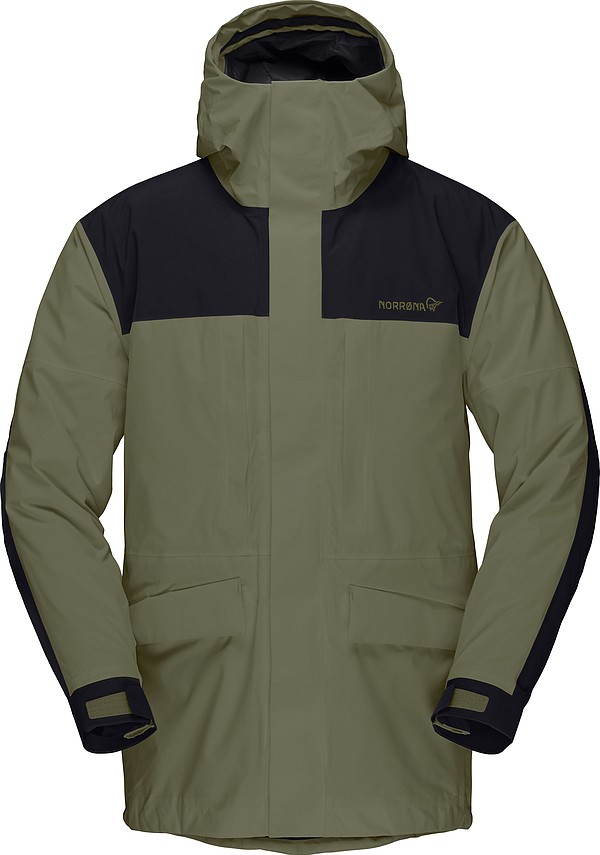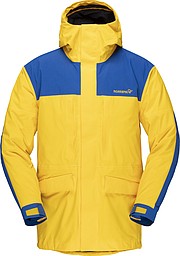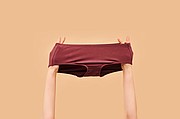TEXTILES
Recent Innovations in Fiber Composition and Dyeing Serve Ecological Purposes
Recently, manufacturers of materials made from and processes used to treat fibers that are used in outdoor, active and athleisure apparel have made advancements that allow consumers to feel more confident that their purchasing decisions will look good and also contribute to a healthier earth and potentially reduce threats to the environment.
A recent announcement from the Latham, N.Y., material-technology-solutions company PrimaLoft saw the company’s introduction of a new biodegradable, 100 percent recycled, synthetic-insulation-and-performance fabric. According to the company’s communications manager, Ken Fisk, the unveiling of PrimaLoft Bio in early September was the culmination of a project that began in 2014.
“We’ve been proactive in our approach to sustainable innovations,” Fisk said. “The company began the development of its biodegradable fibers prior to the growing market demand for more-progressive sustainable solutions. Market-related forces, such as concerns over microplastic, served to accelerate PrimaLoft’s development of biodegradable materials.”
Through a process in which microbes are able to break down the fibers once they are exposed to ocean water, wastewater or a landfill, no potentially harmful residual material is left behind, yet the product retains its durability to perform to the expectations of consumers. Eventually, fibers become water, carbon dioxide, methane, biomass and humus.
“PrimaLoft has enhanced the fibers used to produce its synthetic insulation without affecting their performance characteristics, to enable them to biodegrade at a highly accelerated rate,” Fisk said. “At PrimaLoft, we never saw recycling as the final step, and that is really what spurred the development of PrimaLoft Bio. For PrimaLoft Bio, as with all of our products, our priority is always focused on performance and sustainability. Performance and sustainability should exist in balance with each other. Each one elevated. Neither one sacrificed.”
Despite the challenges of high testing costs during the monitoring of biodegradation rates for the materials and the long periods of time devoted to the process, Fisk notes that every version of the fibers tested had to meet PrimaLoft’s vision and the demands of clients. At the Norwegian outdoor-apparel brand Norrøna, Fredrik Lundberg, director of research for development and design, explained that choosing more-responsible sources for its materials is a priority.
“At Norrøna we are always striving to find ways to utilize the best technology to design and produce more-sustainable products. We use synthetic insulations throughout our product collection, and we are excited to work with partners in the industry who are also pushing toward developing more-sustainable technologies,” Lundberg said. “PrimaLoft Bio is the first of its kind, and we hope that this will push other partners and brands to make more-sustainable materials choices in the future.”
The brand is particularly interested in working with PrimaLoft to combat detrimental effects that fiber leakage can cause to the world’s oceans. Norrøna’s director of innovation and sustainability, Brad Boren, recognizes that approaching sustainability requires examining the entire supply chain from sourcing fibers to the post-consumer life of a garment.
“At Norrøna we look to PrimaLoft Bio to help us reduce marine damage due to fiber leakage,” Boren said. “All fiber production waste and post-use fiber waste should be recycled, but we depend on technology such as Bio to help prevent leakage from washing from entering the environment.”
Serving another area of the apparel-production process, Seoul, South Korea–headquartered Hyosung announced the release of its creora Color+ spandex for materials comprising natural blends such as cotton, rayon or modal. Building from the characteristics of the company’s creora Power Fit, Mike Simko, Hyosung’s global marketing director envisions this new offering as an ideal match for intimate, activewear and ready-to-wear brands that have faced the challenge of creating products that lose their brilliance due to the dyeing limitations of garments that include a high-spandex content.
“A few years ago, we developed creora Color+ for nylon, dyeable fabrics,” Simko said. “But then we saw movement into loungewear, where it’s not necessarily technical fabrics, but they are fabrics that you want to feel good and look good in. It could be ready-to-wear or loungewear, it could be intimate apparel, but you had the same issue. You have this grin-through where 10, 15 or 20 percent of the fabric is not dyeing.”
After working with its scientists on a process to conduct polymer modifications, Hyosung announced on Sept. 14 that its new creora Color+ formula would allow its spandex to accept dyes that could be used with natural fibers. This advancement affords rich colors through technology that will maintain the integrity of deep colors.
“Instead of having a Color+ only for yoga pants, you can now have maybe a cotton-rib camisole or a fitted top made out of rayon jersey,” Simko said. “If it’s a nice fitted top and you’re showing the curves of the woman, the colors are different depending on the curve. Now you can get a more vibrant color.”
As more people have worked from home, Simko has recognized a trend that is carrying out onto the street and will continue to expand in everyday life for the next six to 12 months.
“The trend that we are seeing is the work-from-home experience is going to come out of the home,” Simko explained. “We want to feel good about the way we dress, how it looks, and we may want to be casual but we want our stuff to look good. Maybe we will not be wearing tailored clothing as much because it’s going to be more casual, but we want it to look good on us and fit properly.”

























